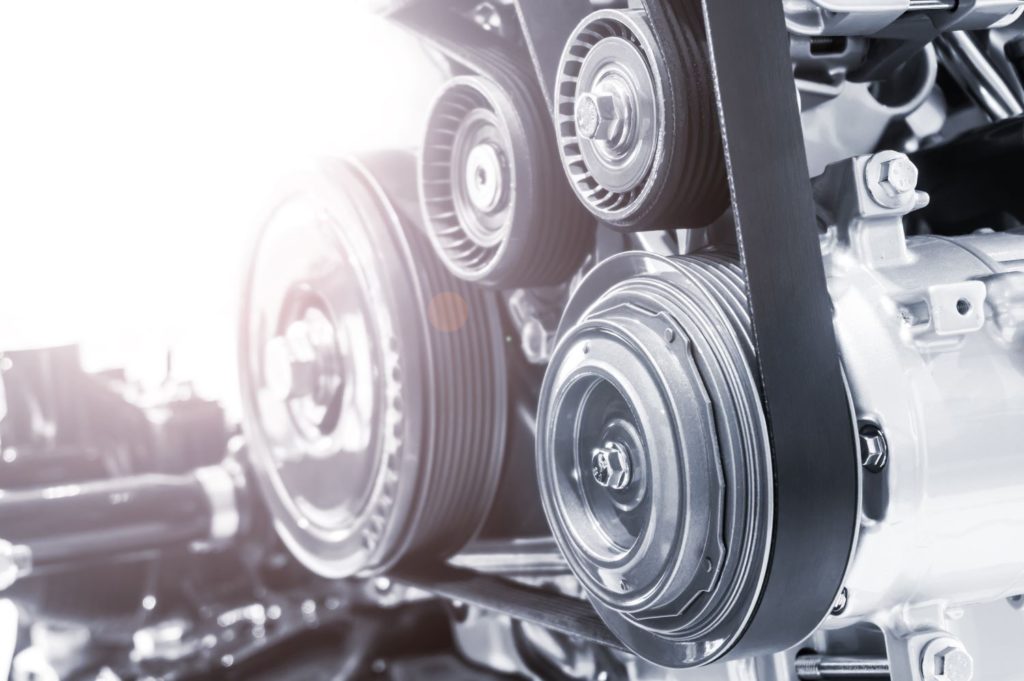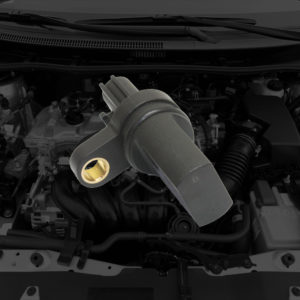The crankshaft pulley is a mechanical device that is directly connected to the vehicle’s crankshaft. It typically uses one or more belts to drive other vehicle accessories, such as the power steering pump, A/C compressor, and alternator.
Also, there is usually a harmonic balancer integrated into or bolted to the crankshaft pulley. The primary purpose of the balancer is to absorb vibrations applied to the engine’s crankshaft.
What Are the Symptoms of a Bad Crankshaft Pulley or Harmonic Balancer?
Having a damaged crankshaft pulley or harmonic balancer can spell trouble for you and your vehicle. Here are some of the most common symptoms of a bad crankshaft pulley that you should watch out for:

Irregular and excessive engine vibration
A vehicle’s engine can produce a lot of vibrations and movements that can sometimes be harmful to other vehicle components. Engineers design vehicles in a way that reduces these engine vibrations to prevent damage to vital drivetrain and engine components.
The harmonic balancer attached to the crankshaft pulley also minimizes excessive engine vibrations. If it fails, there is nothing to absorb these vibrations. As a result, you might notice excessive shaking and vibrations from your vehicle, especially at high engine speeds.

Abnormal knocking noise
Excessive vibrations can cause excessive noise. One of the symptoms you might encounter when dealing with a bad harmonic balancer is a loud knocking sound coming from the engine.
Inoperative engine accessories
Many engine accessories and components rely on the crankshaft pulley to work. These components include the alternator, steering pump, and A/C compressor. A faulty crankshaft pulley can cause the alternator to stop working, producing symptoms of a drained car battery.
Aside from the alternator, the power steering pump can also stop working (if your car has hydraulic power steering). This part pumps hydraulic fluid into the steering system to provide steering assist. If left unrepaired, a damaged crankshaft pulley can lead to steering problems and safety issues.
Engine failure
Although the harmonic balancer may seem simple enough, if it fails, it can cause major problems. Without the balancer dampening unwanted crankshaft vibrations, engine failures, such as worn rod bearings and a broken crankshaft, may result.

Is It Safe to Drive with a Damaged Crankshaft Pulley or Harmonic Balancer?
You should not continue to drive with a faulty crankshaft pulley or harmonic balancer. Doing so can cause additional damage to your vehicle and potentially leave you stranded.
What Should You Do When the Crankshaft Pulley Is Damaged?
If you suspect that something is wrong with your crankshaft pulley or any other engine part, you should stop driving your vehicle immediately to avoid further damage.
Repairing a damaged crankshaft pulley requires special tools and knowledge, which you may lack. If you’re not confident in your engine repair know-how, it’s best to leave the job to a certified mechanic or technician.
How Long Does It Take To Replace a Crankshaft Pulley or Harmonic Balancer?
A typical crankshaft pulley replacement can take anywhere from one to one and a half hours. The duration of repairs depends on a variety of factors, including the type of vehicle and the availability of replacement parts.
How Much Does a Crankshaft Pulley Replacement Cost?
Crankshaft pulley replacements can cost you anywhere from $10 to $400, depending on several factors such as pulley type, material, and vehicle compatibility. Labor can cost you an additional $130 to $160 depending on your location.
Any information provided on this Website is for informational purposes only and is not intended to replace consultation with a professional mechanic. The accuracy and timeliness of the information may change from the time of publication.






























